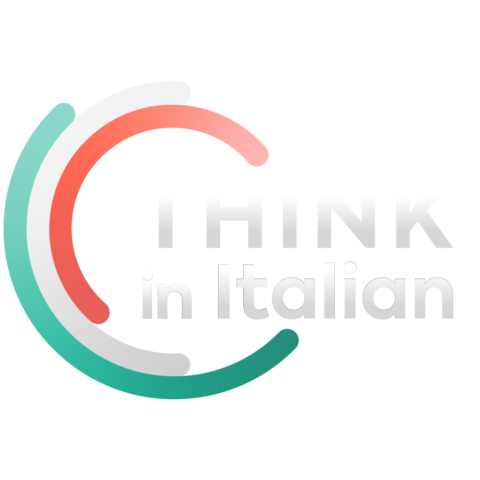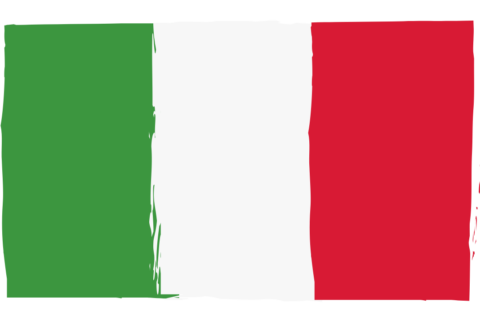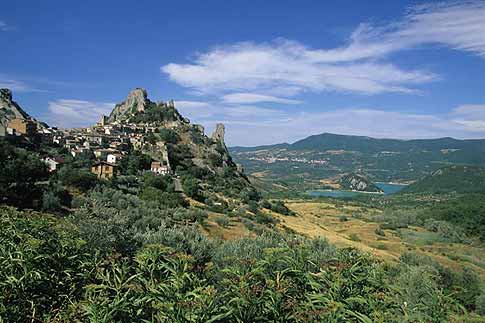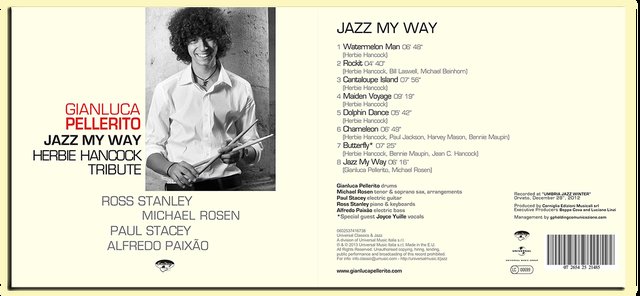Italian fashion has long been revered and admired worldwide for its exquisite craftsmanship, luxurious fabrics, and impeccable style. It has been influenced by a rich history and a plethora of talented designers and fashion houses. Today, Italian fashion continues to set trends and captivate the industry with its unique blend of timeless elegance and cutting-edge designs.
The historical influences on Italian fashion are deep-rooted and have left an indelible mark on its evolution. The Renaissance, known for its celebration of art and cultural renewal, had a profound impact on Italian fashion. During this period, Italy became the center of fashion innovation, with the flourishing of sumptuous fabrics, intricate tailoring, and ornate embellishments.
Italian designers and fashion houses have played a pivotal role in shaping the industry and influencing global trends. Renowned names like Gucci, Prada, Versace, and Dolce & Gabbana have become synonymous with Italian fashion excellence. These designers have showcased their creative genius and bold visions, pushing boundaries, and redefining fashion norms.
In the realm of current Italian fashion trends, the country’s fashion capitals play a significant role. Milan, Florence, and Rome are known for their distinct styles and fashion scenes. Milan Fashion Week, held twice a year, is a hotbed of creativity, where designers present their latest collections and set the stage for upcoming trends. Classic Italian style, characterized by sophistication, elegance, and attention to detail, continues to inspire fashion enthusiasts around the world. Alongside this, modern Italian fashion trends showcase innovative designs, daring color palettes, and experimental silhouettes.
Italian fashion icons and influencers have left an indelible mark on the industry. Renowned designers like Giorgio Armani, Miuccia Prada, and Valentino Garavani have become synonymous with Italian fashion excellence. Celebrities and influencers alike, such as Sophia Loren, Monica Bellucci, and Chiara Ferragni, have played a significant role in shaping Italian fashion and promoting its allure on a global scale.
Italian fashion weeks and events are an integral part of the industry’s calendar, drawing attention from fashion enthusiasts and industry professionals worldwide. Milan Fashion Week, one of the most prestigious events, showcases the latest designs, emerging talents, and the glamour of the fashion world. Pitti Immagine, held in Florence, focuses on menswear, while other notable fashion events in Italy celebrate specific themes, regions, or designers.
Italian fashion continues to be a powerhouse, reflecting the rich heritage, craftsmanship, and creativity of the country. The influence of history, renowned designers, current trends, and captivating events have cemented Italy’s position as a global fashion leader.
Historical Influences on Italian Fashion
The rich history of Italian fashion is shaped by influential periods and the brilliant minds behind iconic designs. In this section, we’ll dive into the captivating world of historical influences on Italian fashion. From the Renaissance era’s distinctive impact on Italian fashion to the enduring influence of talented Italian designers and fashion houses, we’ll explore how these factors have shaped the evolution of Italian fashion trends. Prepare to be swept away by the fascinating stories and lasting legacies that have made Italian fashion a global force to be reckoned with.
The Renaissance and its Impact on Italian Fashion
During the Renaissance, Italian fashion underwent significant changes, reflecting the profound impact that this period had on the industry. The Renaissance brought about a shift from medieval austerity to a newfound focus on individualism, luxury, and artistic expression, which still influences Italian fashion today.
Italian designers and fashion houses fully embraced elaborate fabrics, intricate embroidery, and meticulous tailoring, thereby establishing new standards for craftsmanship in the industry. Additionally, the Renaissance era witnessed the introduction of fashion accessories such as lace, gloves, and handkerchiefs, further elevating Italian fashion to demonstrate the country’s creativity, wealth, and cultural prowess. These developments solidified Italy’s position as a leading fashion influencer. Remarkably, Italian fashion continues to draw inspiration from the opulence and artistry of the Renaissance, seamlessly incorporating these elements into contemporary designs. By exploring further into the impact of the Renaissance on Italian fashion, one can gain deeper insights into the rich history and artistic essence of Italian fashion.
Influence of Italian Designers and Fashion Houses
Italian designers and fashion houses have had a significant influence on the global fashion industry. The unique designs, craftsmanship, and attention to detail of these Italian designers have made Italy synonymous with luxury and elegance. Brands like Giorgio Armani, Dolce & Gabbana, and Versace have created iconic fashion houses that continue to shape trends and inspire other designers worldwide. The innovative designs, use of luxurious fabrics, and impeccable tailoring by these fashion houses are well-known. The influence of Italian designers and fashion houses can be seen not only on the runways but also in everyday fashion choices, as they set the bar for style and sophistication.
Current Italian Fashion Trends
Italian fashion has always been synonymous with style and elegance. In this section, we’ll dive into the vibrant world of current Italian fashion trends. From the iconic fashion capitals to the timeless classic Italian style and the ever-evolving modern trends, we’ll explore the rich tapestry of Italy’s influence on the fashion scene. Buckle up and get ready to immerse yourself in the allure of Italian fashion like never before.
Italian Fashion Capitals

Stop reading, start speaking
Stop translating in your head and start speaking Italian for real with the only audio course that prompt you to speak.
Italian Fashion Capitals, such as Milan, Florence, and Rome, are renowned for their influential role in the global fashion industry. Milan, known as the fashion capital of Italy, stands out for its luxury brands and high-end fashion houses like Gucci and Prada. Florence, another Italian fashion capital, is celebrated for its rich history in craftsmanship and textile production. Rome, with its unique blend of ancient and modern influences, also holds a significant place as a fashion capital. These cities, recognized as Italian Fashion Capitals, truly exhibit the best of Italian fashion, setting trends and inspiring designers worldwide. When it comes to Italian fashion, these capitals are the vibrant hubs where creativity and innovation thrive.
Classic Italian Style
Italian fashion is known for its timeless and sophisticated style. The classic Italian style is characterized by elegance, craftsmanship, and attention to detail. Here is a table showcasing some key elements of classic Italian style:
| Classic Italian Style | Description |
| Quality Fabrics | Italian fashion is renowned for its use of luxurious fabrics such as silk, cashmere, and fine wool. |
| Tailoring | Italian tailoring is all about precision and perfect fit. It emphasizes clean lines and flattering silhouettes. |
| Neutral Colors | Classic Italian style favors neutral colors like black, white, beige, and navy, creating a timeless and sophisticated look. |
| Effortless Chic | Italian fashion exudes an air of effortlessness, combining simple and minimalistic pieces to create stylish yet understated outfits. |
| Accessorizing | Accessories play a key role in completing the classic Italian look. Think statement handbags, elegant scarves, and refined jewelry. |
Modern Italian Fashion Trends
Modern Italian fashion trends embody a refined and diverse blend of timeless styles and contemporary influences. Italian designers consistently push boundaries and experiment with inventive designs, materials, and silhouettes. Presently, oversized blazers, wide-leg pants, statement accessories, and striking patterns stand as some of the prevailing trends. Italian street style embraces effortless elegance and meticulous attention to detail. Renowned luxury brands such as Gucci, Prada, and Dolce & Gabbana establish the standard in Italian fashion, while emerging designers offer new and refreshing perspectives to the industry. The latest Italian fashion trends often take center stage at prestigious events like Milan Fashion Week and Pitti Immagine.
Italian Fashion Icons and Influencers
Italian fashion is often synonymous with elegance and style. In this section, we shed light on the remarkable Italian fashion icons and influencers who have left an indelible mark on the industry. From renowned fashion designers who have shaped Italian fashion with their incredible creativity and innovation to celebrities and influencers who continue to inspire trends, we explore the diverse talents that have made Italy a fashion powerhouse. Get ready to discover the captivating stories behind the faces that define Italian fashion.
Renowned Italian Fashion Designers
Renowned Italian fashion designers have made significant contributions to the global fashion industry. Their craftsmanship, creativity, and attention to detail have established Italy as a fashion powerhouse. Some notable Italian fashion designers, including Giorgio Armani and Donatella Versace, have gained worldwide recognition for their timeless and sophisticated designs, as well as their bold and daring style. In addition to these notable designers, brands such as Prada, Dolce & Gabbana, and Valentino have also made a substantial impact with their unique aesthetics and innovative designs. The influence of these renowned Italian fashion designers extends not only to Italian fashion but also to fashion trends worldwide.
Celebrities and Influencers Shaping Italian Fashion
Celebrities and Influencers Shaping Italian Fashion play a significant role in shaping Italian fashion trends. Their influence extends beyond the red carpet and into everyday style choices.
- Red Carpet Influencers: Celebrities like Sofia Loren and Monica Bellucci have made Italian elegance and glamour iconic.
- Street Style Influencers: Influencers like Chiara Ferragni and Eleonora Carisi showcase unique and daring Italian fashion choices, inspiring others to embrace creativity.
- Designer Collaborations: Italian fashion houses often collaborate with celebrities, such as Versace teaming up with Lady Gaga to create iconic red carpet looks.
- Social Media Influence: Influencers using platforms like Instagram have become powerful forces, showcasing Italian fashion and influencing trends worldwide.
Italian Fashion Weeks and Events
Italian fashion comes alive with a burst of creativity during the various fashion weeks and events held in the country. Milan Fashion Week, Pitti Immagine, and other notable fashion events in Italy set the stage for designers, models, and fashion enthusiasts to showcase their latest trends and influences. From glamorous catwalks to innovative designs, these events offer a captivating glimpse into the vibrant world of Italian fashion. Get ready to immerse yourself in an extravaganza of style and artistry that defines the Italian fashion scene.
Milan Fashion Week
Milan Fashion Week is one of the most highly anticipated events in the fashion industry. It showcases the latest collections from renowned Italian designers, as well as emerging talents. The week-long extravaganza takes place biannually in Milan, Italy, attracting fashion lovers, buyers, and media from around the world. Milan Fashion Week sets the tone for upcoming fashion trends, with designers unveiling their innovative designs and creative concepts on the runway. It serves as a platform for fashion influencers and industry professionals to connect and collaborate. Attending Milan Fashion Week offers a unique opportunity to witness firsthand the glamour, creativity, and influence of Italian fashion. Suggestions: Plan ahead to secure invitations to top runway shows, immerse yourself in the fashion atmosphere by exploring Milan’s fashion districts, and stay up-to-date with the latest fashion trends showcased during the week.
Pitti Immagine
Pitti Immagine is a renowned fashion event held twice a year in Florence, Italy. It showcases the latest trends in menswear, womenswear, and accessories. Designers, brands, and industry professionals from around the world gather at Pitti Immagine to network, showcase their collections, and establish new business relationships. The event features runway shows, trade fairs, exhibitions, and cultural events, making it a hub for fashion enthusiasts and influencers. With its rich history and exceptional curation, Pitti Immagine has become an essential platform for the global fashion industry. Its influence extends beyond Italy, shaping fashion trends and inspiring designers worldwide.
For more insight into Italian fashion trends and influences, visit Italian Fashion Trends and Influences on Vogue.co.uk.
Other Notable Fashion Events in Italy
Other Notable Fashion Events in Italy
There are several other notable fashion events in Italy that fashion enthusiasts should be aware of. These events provide platforms for emerging designers to showcase their talents and contribute to the ever-evolving Italian fashion industry. Some of these events include Rome Fashion Week, Florence Fashion Week, and AltaRoma. Rome Fashion Week embraces Italian elegance and showcases the creativity of both established and emerging designers. Florence Fashion Week celebrates the city’s rich artistic heritage and presents a unique blend of fashion and art. AltaRoma focuses on promoting sustainable fashion and supports young designers who prioritize ethical and eco-friendly practices. Attending these events can offer valuable insights into the latest trends and emerging talents in Italian fashion.


.jpg)


